The painting Metropolis by George Grosz is not very well known and yet it is a painting with a fascinating history. It bears witness both to the transformation of cities at the beginning of the 20th century and to the cataclysm of the First World War. Let us discover this astonishing painting.
In what context did George Grosz paint this canvas?
At the beginning of the 20th century many painters were fascinated by the transformation of cities into large metropolises, but while most artists interpreted it optimistically, George Grosz did not see it in the same way at all.
Indeed, George Grosz was strongly influenced by the historical context at the time he painted this canvas. After attending the Academy of Dresden, he returned to Berlin in 1912 in the midst of the Belle Epoque. The First World War had not yet broken out, but peace was armed and technical progress developed a blind faith in science. Grosz finds himself in a society that he perceives as selfish and inward-looking.
When war breaks out, he enlists in the army before being discharged for health reasons.
“War was for me horror, mutilation and annihilation.”
At the time he painted Metropolis, between 1916 and 1917, Berlin was a city of nightmares. Catastrophic potato harvests forced the population to follow a strong rationing policy. This period was called the “turnip winter” because this vegetable became the staple food.
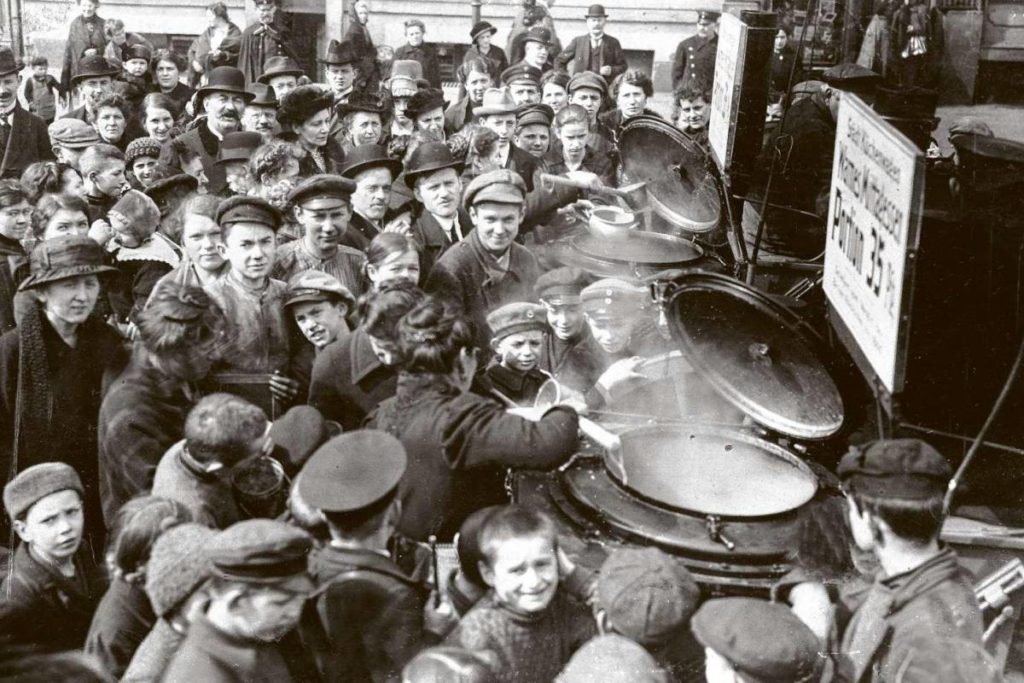
What does Metropolis represent?
The scene of the painting takes place in Berlin, as shown in the Hotel Atlantic, the central hotel of the German capital. In a cubist and futuristic style, George Grosz depicts a dehumanized crowd, prisoner of an infernal way of life. This situation is exaggerated by means of very strong lines that form two diagonals on either side of the building, and by this unreal red emanating from a burning sun.
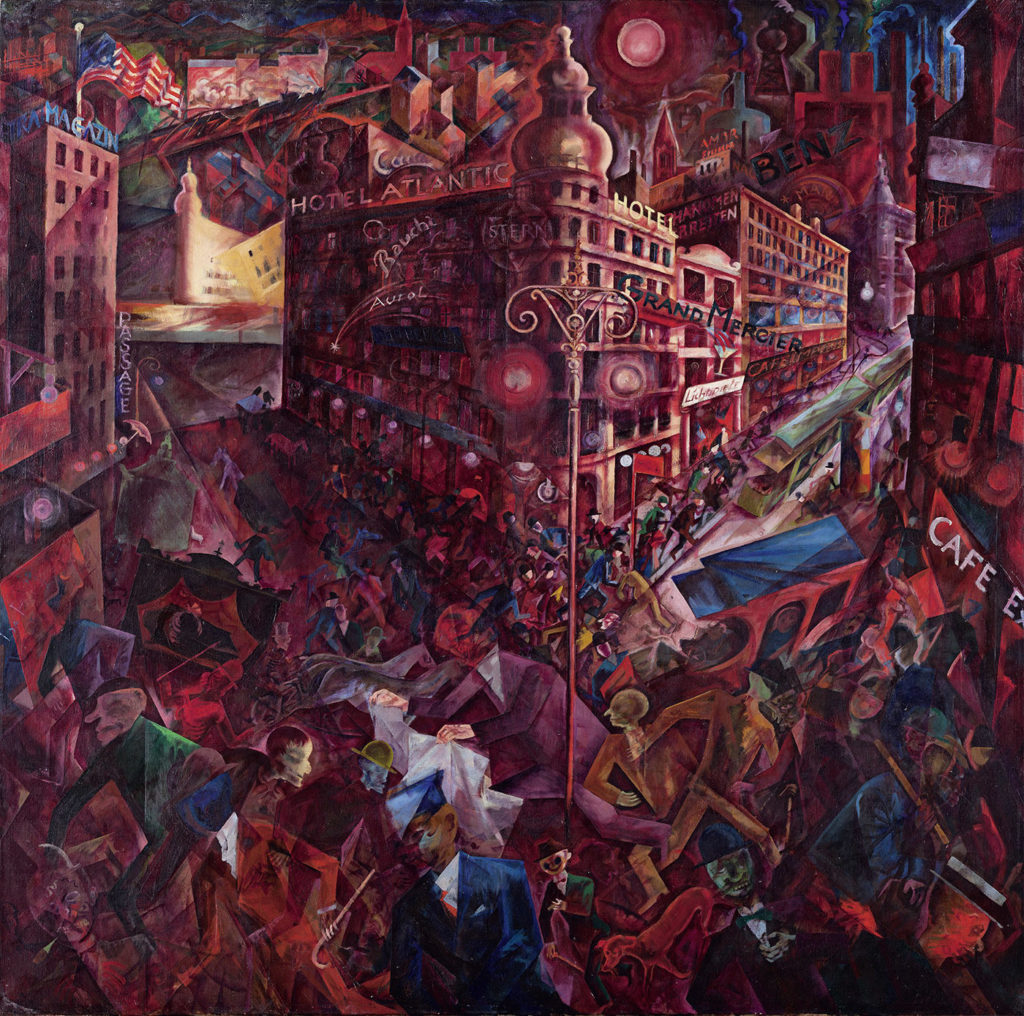
In this painting, death is omnipresent. One can see a macabre carriage driven by a skeleton, as well as a figure who seems to have come from the beyond and who covers the living with a shroud.
However, the canvas is not without hope. On the façade of the hotel a shooting star gives a bit of magic and hope. In the upper left-hand corner you can also see an American flag, a symbol of escape. The artist – who Americanised his name from Georg Groß to George Grosz – immigrated here at the beginning of the 1930s when Hitler came to power.
Where can this painting be seen?
In the 1920s, Metropolis was bought by a German museum before being presented as “degenerate art” in an exhibition worn by the Nazi regime. The painting was eventually sold by the Third Reich to finance its rearmament programme. The work then passed from hand to hand before landing in a New York gallery where George Grosz himself bought the painting.
Today it is part of the collections of the beautiful Thyssen-Bornemisza Museum in Madrid.
ALSO READ : Visiting Madrid for the first time, useful tips

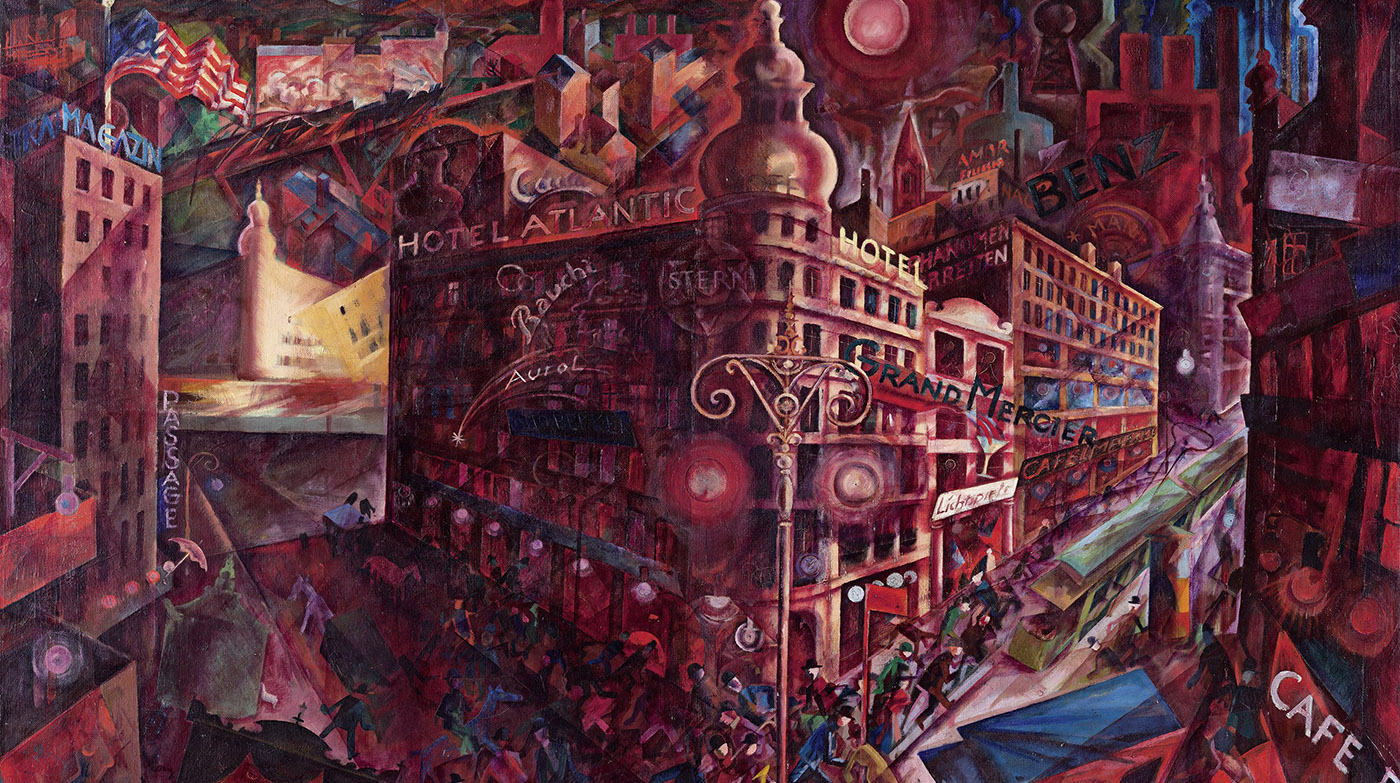



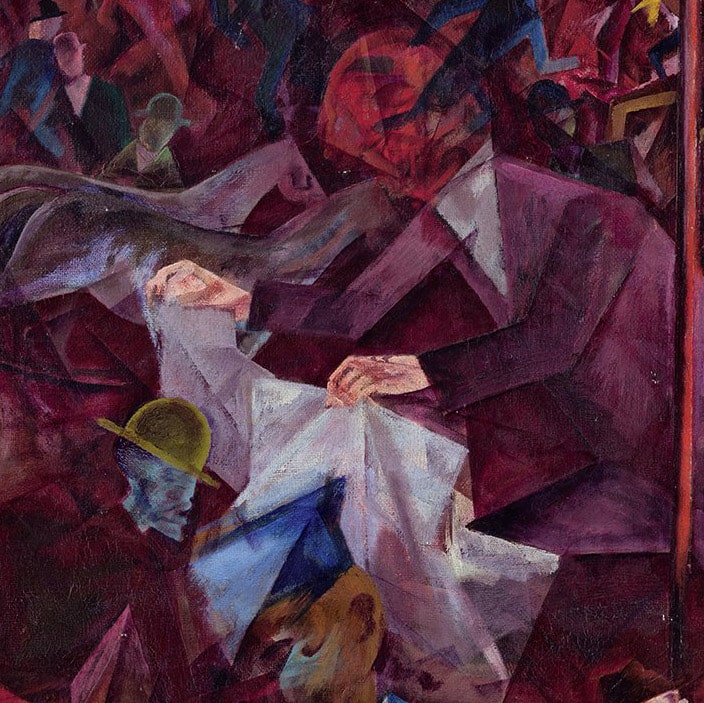
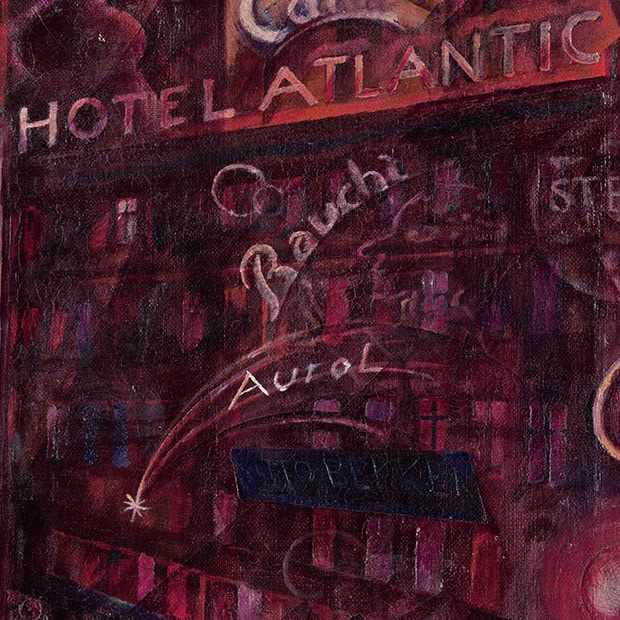
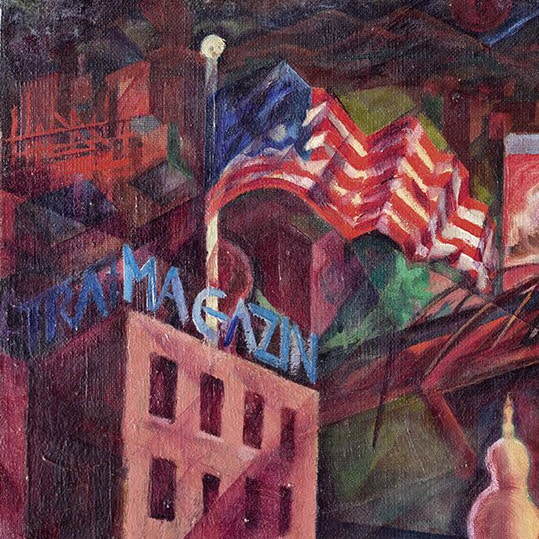


No Comments
Leave a comment Cancel